Europe
Ukraine's new Bradley Fighting Vehicles face damage and quick repairs
Washington Post July 20, 2023
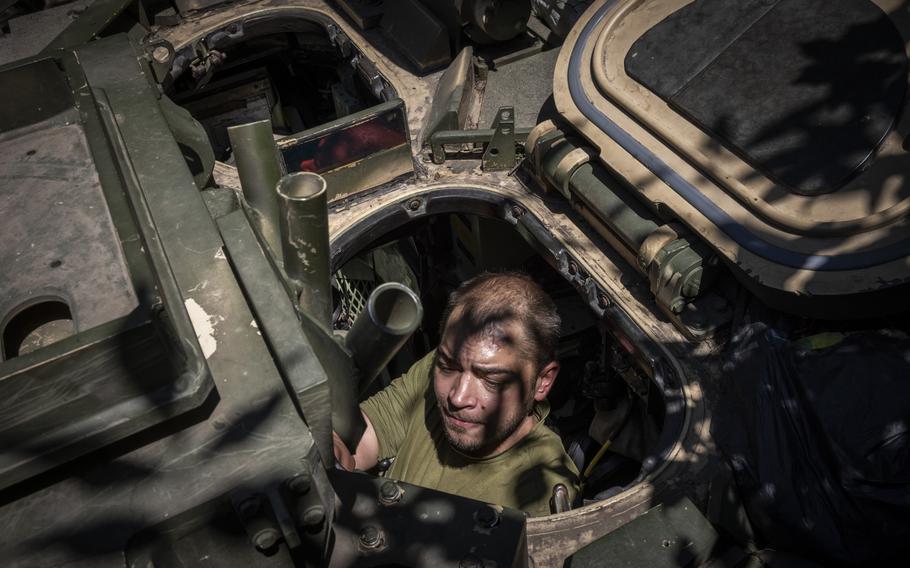
A 47th Brigade soldier works on a Bradley Fighting Vehicle. (Ed Ram/for The Washington Post)
ZAPORIZHZHIA REGION, Ukraine — The Ukrainian commander of the Bradley infantry fighting vehicle was unloading troops at the front and then planned to transport three injured soldiers back to a field hospital. "But in that one minute, you suddenly have 30, 40, 50 shells flying in — everything explodes, soil is flying around, everything lights up," said the commander, who asked to be identified by his call sign, CZ, in keeping with Ukrainian military protocol.
The Bradley — a heavily armed troop transporter that can destroy other armored vehicles — was damaged by shrapnel, but CZ and his crew survived. In the opening month of Ukraine's long-anticipated counteroffensive, newly provided Bradleys and German Leopard tanks — predictably — have taken hits.
About a dozen Bradleys have been destroyed, a senior U.S. defense official said. Data from Oryx, a military analysis site that counts losses it has visually confirmed, shows that a couple dozen more have been damaged to varying degrees. Many have been fixed and returned to the battlefield. Some must be sent to Poland for more extensive repairs.
CZ's vehicle is now nestled in a wooded area in Ukraine's southeastern Zaporizhzhia region, one of several secret locations near the front line where the 47th Mechanized Brigade rushes to repair its new Western weaponry.
The 47th Brigade, the only unit known to have received the Bradleys, was set to get 99 before the start of the counteroffensive, according to leaked U.S. intelligence documents. The United States has committed 190 Bradleys overall, with more than half delivered to operational units in Ukraine, said the official, who spoke on the condition of anonymity because of the sensitivity of the issue.
The U.S. military typically considers a vehicle destroyed when it cannot be salvaged or refurbished after what is commonly called a "catastrophic kill," though some parts could still be stripped. Damaged vehicles can be recovered and repaired to working condition.
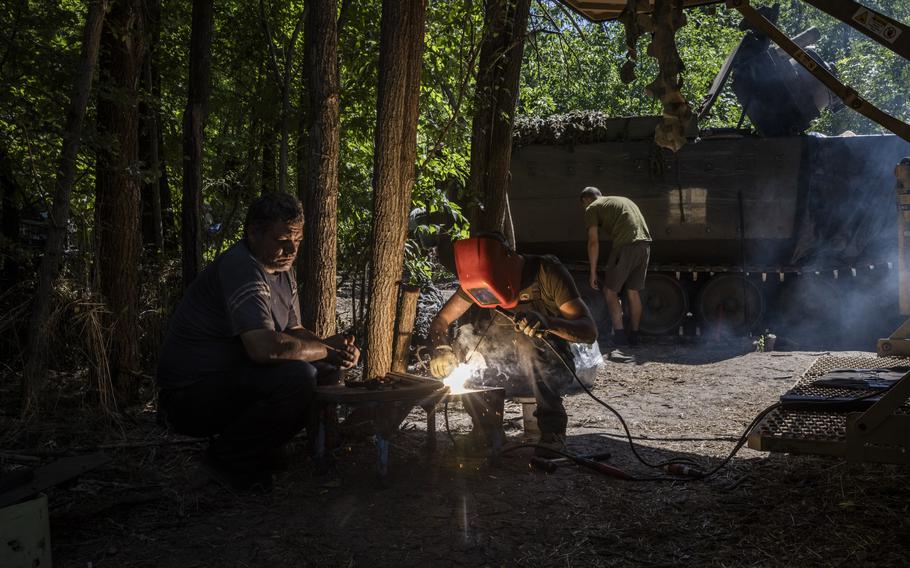
A welder works in front of a U.S.-supplied M113 armored personnel carrier at the workshop. (Ed Ram/for The Washington Post)
Losses of equipment were expected — and have not rattled Ukrainian commanders who said any hopes that the new weaponry would overwhelm the Russians were misplaced. In a recent interview with The Washington Post, Gen. Valery Zaluzhny, Ukraine's military chief, said Kyiv didn't get the vehicles to ride them in parades, and on the battlefield, they're targets. "Yes, we lose them. Not much, let's say, but there are losses. You can't get away from that," he said.
"It's a normal phenomenon," Zaluzhny said. "Don't treat the Leopard as a panacea — that a battalion of Leopards will decide the outcome of this war. Why all of a sudden? Who's the one who decided that it's going to solve it?"
But even amid the early damage, Ukrainian troops have experienced the benefits of the new equipment. In the biggest plus, soldiers said, the Bradley protects everyone inside — typically, soldiers suffer just minor injuries if the vehicle hits an antitank mine, for example. Each Bradley is designed to carry a three-person crew and six soldiers as passengers.
In a post on Facebook, Oleg Sentsov, a Ukrainian filmmaker and platoon commander in the 47th Brigade, wrote that he came under heavy artillery fire on a combat mission over the weekend. Sentsov and others were wounded by shrapnel, but "Bradley saved our lives again," he said.
However, "there are a lot, a lot, a lot of mines — not thousands, but hundreds of thousands," CZ said.
And Bradleys will stop because of damaged tracks depending on what kind of mine they run into, limiting the Ukrainians' ability to breach the Russians' defenses with them. Most of the Bradleys getting repaired — reporters from The Post saw at least six at the wooded location they visited — were damaged by mine explosions.
The fighting vehicles were meant to be used in a strategy called combined arms, in which infantry, armor and aviation units work in concert to protect one another and inflict maximum violence. Ukrainian troops received U.S.-led combined arms training in Germany to shed Soviet-era habits of units operating in a vacuum without close coordination.
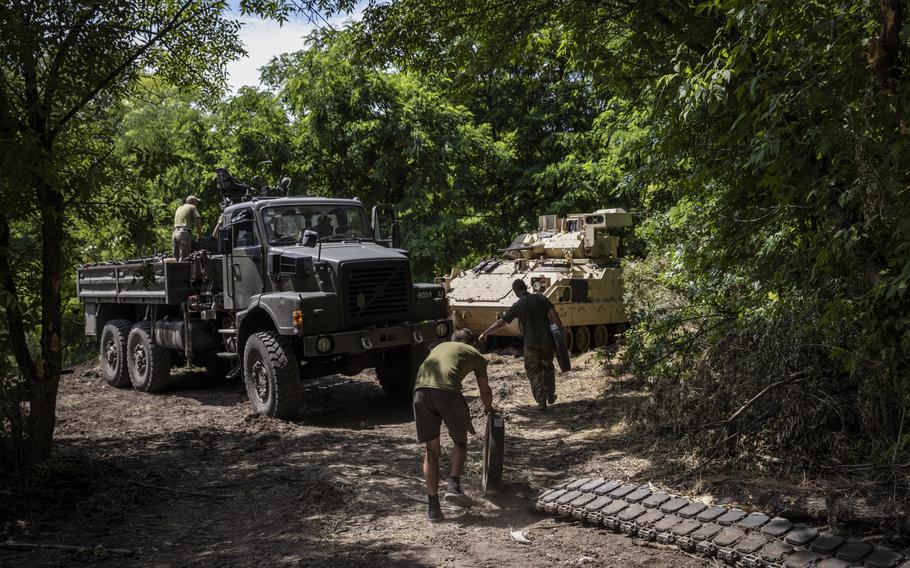
Personnel from Ukraine’s 47th Mechanized Brigade prepare to change wheels and tracks of a damaged Bradley Fighting Vehicle at the Zaporizhzhia workshop. (Ed Ram/for The Washington Post)
Ukrainian units have in many cases used the Bradleys as part of that philosophy, the senior U.S. defense official said. But there are anecdotal reports to the contrary, too. Ukraine also still does not have extensive air capabilities.
In some cases, Ukrainian units are "just not using them to their fullest potential with all their other assets that they have available," the official said. It could be that some commanders feel more comfortable with how they were originally taught and fall back on that experience, the official said.
Ukrainian military personnel have described a change in strategy after some early equipment losses. Because of the dense minefields that will damage the vehicles, soldiers are now advancing in small groups and in foot.
Some Bradley repairs can take just a few hours. Others need a few days. Some vehicles are labeled "donors," meaning the Ukrainians will strip out the usable parts to install in other, less-damaged Bradleys and then fill the donor vehicle with the broken bits before shipping it off for a larger-scale repair at the facility in Poland. One early limitation for how quickly the Ukrainians can fix the Bradleys and get them back on the battlefield: not enough spare parts, military personnel said.
Any request for spare parts has to be made formally to a senior commander, who has a limited reserve and multiple units that need them. An American M109A6 Paladin self-propelled howitzer is currently not in use by the 47th Brigade because of a mechanical issue that the soldiers do not yet have the parts to fix.
The U.S. official was unaware of issues that affected the delivery of parts from U.S. stocks and suggested bottlenecks could exist within the Ukrainian supply chain.
"When the first Bradleys came in for repairs, the decision of, 'Is this one a donor or not' wasn't being made yet," said the chief of staff for the 47th Brigade's repair and recovery battalion, whose call sign is Maz. "So where do we get the spare parts from? When the donors started appearing from which we could take the spare parts, then we started fully repairing them. But before donors, we were just doing minimal repairs and waiting for others to be damaged."
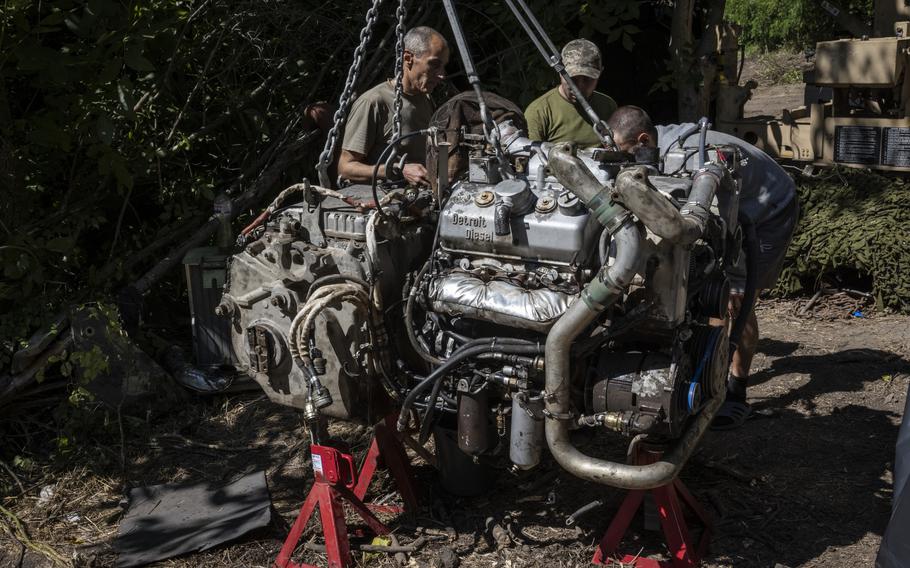
Troops from the 47th work on the engine of an M113 armored personnel carrier. (Ed Ram/for The Washington Post)
The fewer vehicles that have to be sent to Poland for major repairs, the "more lives saved," Maz said, because troops cannot afford to wait weeks for a Bradley to return to the front line. Training at a U.S. base in Germany earlier this year taught Maz and others from the 47th not just how to operate the Bradleys but also how to fix them.
"When I chose my crew, I made sure that the ones I picked loved technical equipment," Maz said. "A tractor driver who has worked on the fields, or a trucker, who lives this stuff. I sometimes give them so much s--- for their work. I tell them, 'This is like your house, you should be able to sit there in slippers.'"
Fewer than a dozen Bradleys have been sent to Poland for repair, the U.S. defense official said, and in some cases fresh vehicles were sent to replace those shipped out instead of waiting on repairs. Gen. Mark A. Milley, chairman of the Joint Chiefs of Staff, hinted Tuesday at a news conference at those unused stocks, describing a "robust Ukrainian reserve force [that] lies in wait to be committed at the optimal time and place of Ukrainian choosing."
Just as the Ukrainians often publish photos and videos showing destroyed Russian equipment — some burned tanks and fighting vehicles have even been displayed in downtown Kyiv for people to take photos with — Russian forces have circulated drone images of damaged Bradleys and Leopards to embarrass the Ukrainians and try to undermine the West's pledge to continue supplying Kyiv with the expensive materiel.
A cluster of Ukrainian vehicles got trapped in a minefield during the first days of the counteroffensive and was then attacked by Russian helicopters overhead. The image of the destroyed Bradleys and Leopards was then circulated widely by Russian accounts on the Telegram social messaging app. Ukrainian forces have since changed tactics — clearing pathways of mines manually and then advancing by foot — to better safeguard the equipment.
Defense Minister Oleksii Reznikov said Ukraine does not hide how much Western-provided materiel is destroyed or damaged, relaying those numbers to partners. "In every new aid package, we're getting spare parts," he said.
"For now, we're able to repair them ourselves, and even if there is some damage, our crews are repairing it," Reznikov added. "Very few have been completely destroyed."
The Washington Post's Horton reported from Washington. Anastacia Galouchka in Kyiv, Ukraine, and Missy Ryan in Washington contributed to this report.
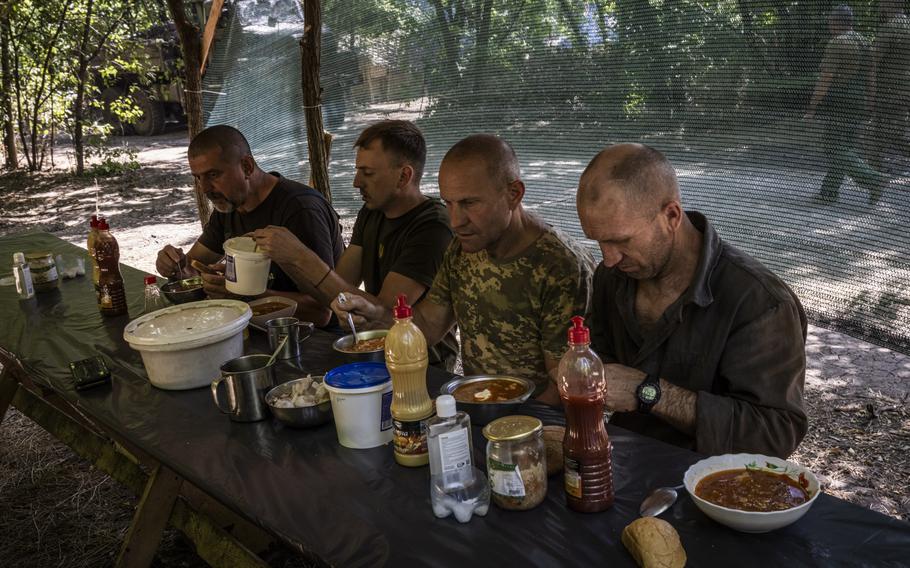
Troops from the 47th have a lunch of borscht after working on Bradley Fighting Vehicles at the Zaporizhzhia workshop. (Ed Ram/for The Washington Post)